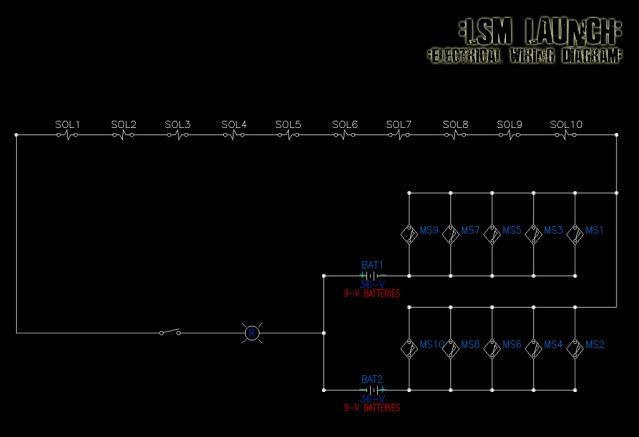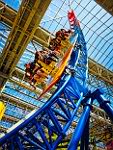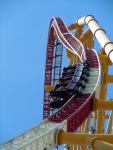Been working on this for a while now and the time has come to start releasing details. Before any questions are asked about it, yes I'm using this for Mr. Freeze. I intend to publicize all of my findings and compile them all into a freely distributed PDF under my name. That being said, I claim all intellectual property herein as my own unless otherwise attributed.
I claim copyright of my material under the same license we claim copyright for tutorials here. This may not be copied, published, or sold without my express written permission.

Creative Commons Attribution-NonCommercial-ShareAlike 3.0 Unported License
With that out of the way, lets get down to the nitty gritty.
We all know the genius that Tyrant is, and though his LSM launch was ultimately no more than an experiment, nobody else has put the time into debugging and improving his setup, so this is going to be what Tyrant wanted his launch to be. Here is a link to his thread from some time ago.
There were several flaws in Tyrant's early design which were not addressed in his redesigns. Here is the only remaining publicized circuit diagram from his project:

The first problem is a critical flaw and contributes to his reed switches burning out - no circuit isolation. All of the current is pushed through the reed switches which are only designed to handle signal currents (well under 1A), and I can guarantee that with 10 electromagnets more than 1A was pushed through those switches as they activated. They fried, unsurprisingly.
The second problem is a compound issue relating to current management. According to this schematic, all 10 electromagnets were activated at once, which draws a lot of current. To find out approximately how much current one unrestricted electromagnet would pull, read a bit further. Suffice it to say that he was pulling hundreds of amps at a time, which is extremely dangerous and is the reason why he blew up so many power supplies.
Unfortunately, I was unable to salvage much from Matt's project as it was riddled with issues. I also want to take the time to explain LSM vs. LIM a little bit here, as the explanations in the thread are a bit confusing:
LIM (Linear Inductance Motor) - The train is effectively encased in a large coil, and some non-conductive material experiences Eddy currents, which is effectively an induced current that, by virtue of alternating current, propels the car down the track. For real life comparisons of this technology, see Mr. Freeze, Joker's Jinx, etc. All LIM launches are enclosed and sort of act as a magnetic gun.
LSM (Linear Synchronous Motor) - The train contains a rare earth magnet which reacts to smaller electromagnets and propels the train forward. This technology is a bit more straightforward and is more suited for this project. For real life comparisons of this technology, see Superman Escape from Krypton.
So the question remains: How do we launch a K'Nex roller coaster with magnets?
Well, that's what I aim to show. Some primary considerations, such as components and preliminary calculations have been made to make this job more digestible. Here are the components I intend to use (an incomplete list):
Arduino Mega
300W Power Supply
IRFP250N FETs
Octocouplers (P/N TBD)
5/8" Diameter Cast Iron Rods
20 AWG magnet wire
An octocoupler is a totally isolated transistor that uses an LED as its activator instead of a current, which will protect the Arduino in case of a FET failure (we don't want high currents getting back to the board, as it would fry).
Each electromagnet will be four inches long. I have done some calculations to determine how much current said electromagnet will pull if left to its own devices, simply due to the resistance in the wire:

As you can see, this is nearly 60 amps. If we assume Matt's electromagnets pulled a similar amount of current, then his launch would pull upwards of 600A during launch, which explains why the power supplies fried. My 300W power supply is rated at 15A on the 12V line. A power supply will cycle power to itself if this limit is exceeded, but only to a certain extent. If it is exceeded substantially, the PSU will fail without question.
So how do we create a stable power source? We can't have the thing powering itself on and off during launch, and 60A is significantly higher than 15A. To do this, we will implement what's called a duty cycle (I will use 1/5 or 1/6 on my Mr. Freeze recreation, details of that to come after testing).
A duty cycle is a way to limit the amount of current drawn from a power source. A 12V line rated at 15A can only supply 15A continuously, but can supply more instantaneously. So, by turning on the power supply for 1 "unit" of time, then leaving it off for 3, and then repeating that pattern, we can create a 1/4 duty cycle (i.e. power drawn for 1/4 of the time, so only 1/4 the current is pulled when the time unit become small enough). This allows us to pull 15A instead of 60 and not burn out the PSU or cause it to switch off!
This is where the octocouplers come in. The large FET described above requires higher currents than an Arduino can signal with in order to fully saturate, which means to allow the maximum allowed current through the FET. By activating the octocouplers in a 1/4 duty cycle, the large FET will be active in the same way, which will only draw 15 amps. This is a bit too close to the max of the PSU so that's why I will use a 1/5 or 1/6 duty cycle, but this was only to show simple calculations. Also note I will be activating one magnet at a time and switching direction, but at no point will the magnet system draw more than 15 A (in the case of a 1/4 duty cycle) + the current needed for the FET and octocoupler.
I am working on determining the proper octocoupler to use, as well as gathering parts and calculating the force an electromagnet the size I'm building can exert so I can get an approximation of how quickly I'll be able to get this train moving. More detail on the calculations and parts to come, I just wanted to document my findings thus far.
If you guys have any questions, ask away!
-Ben
































